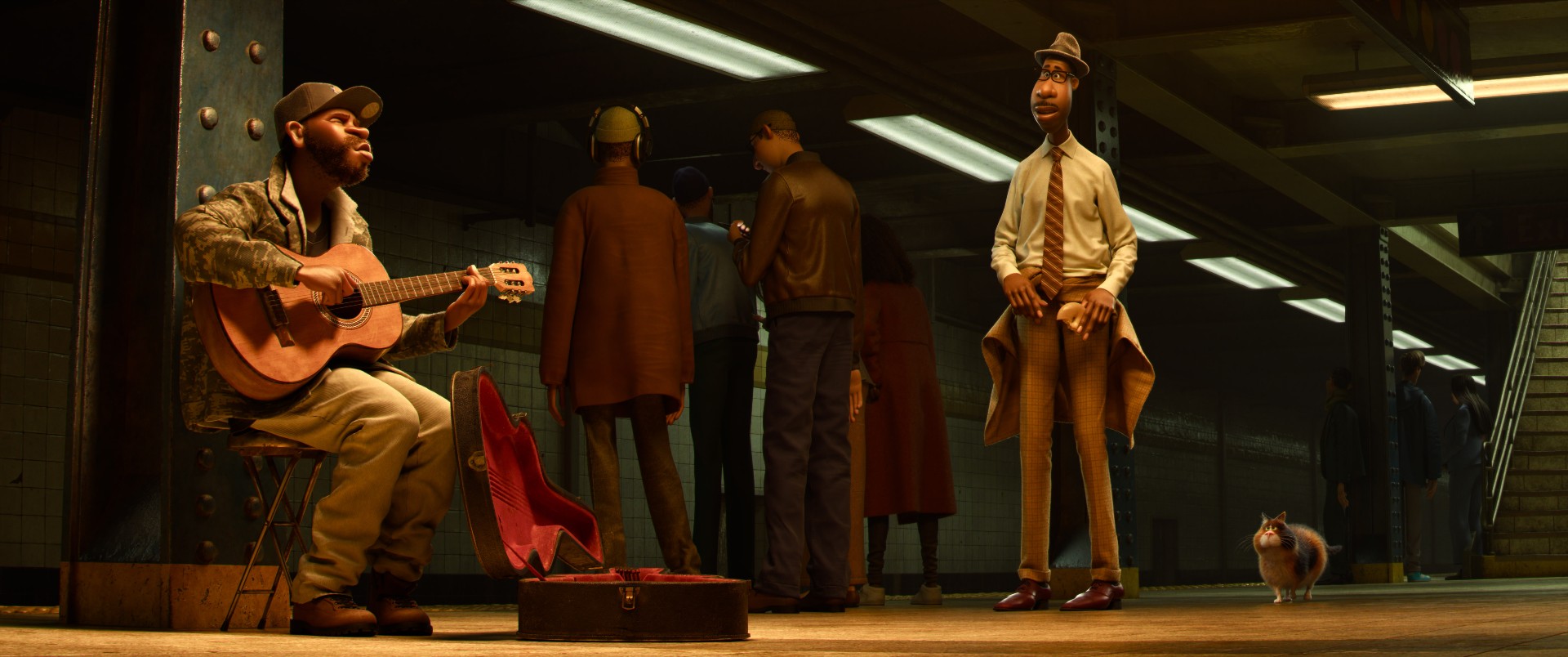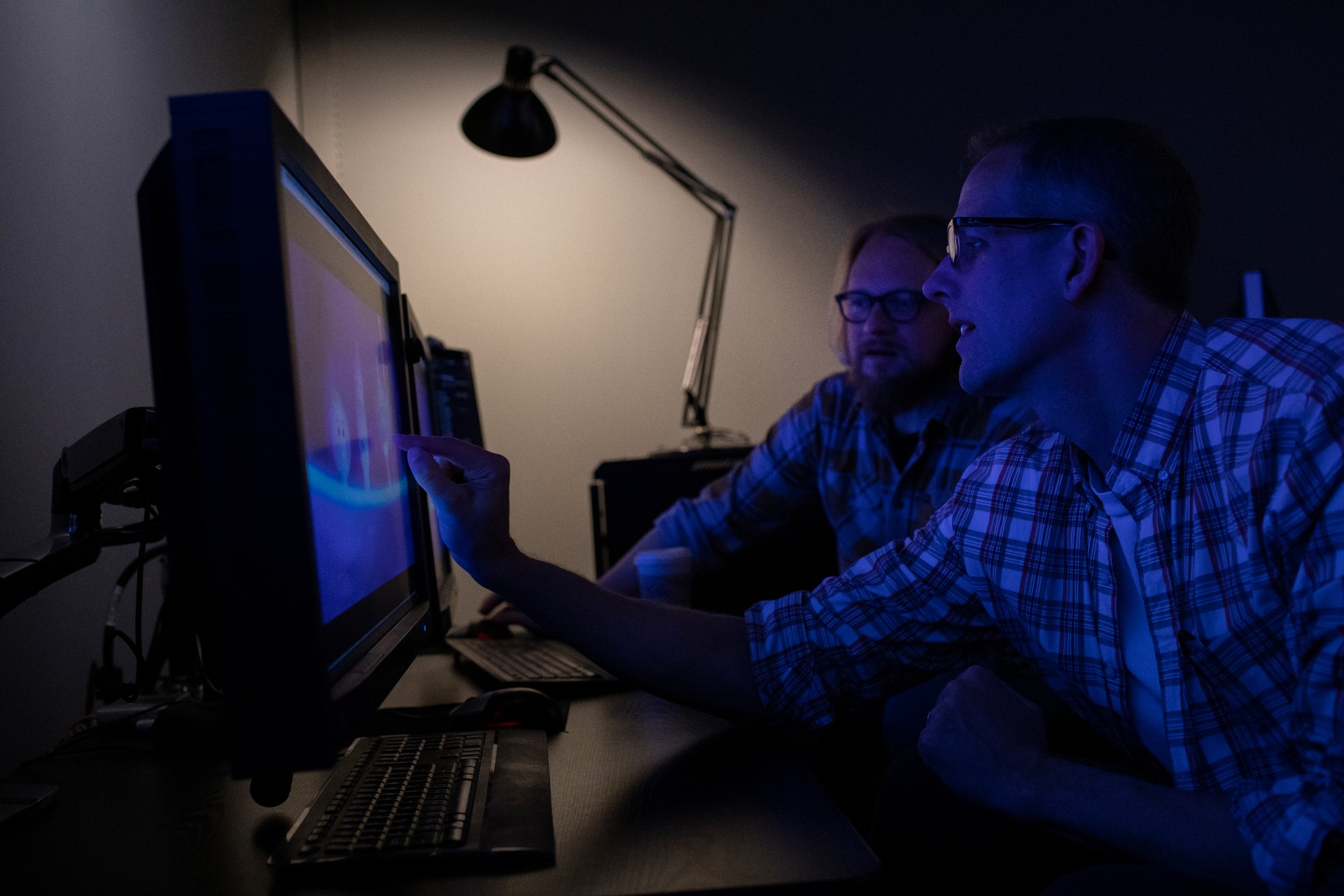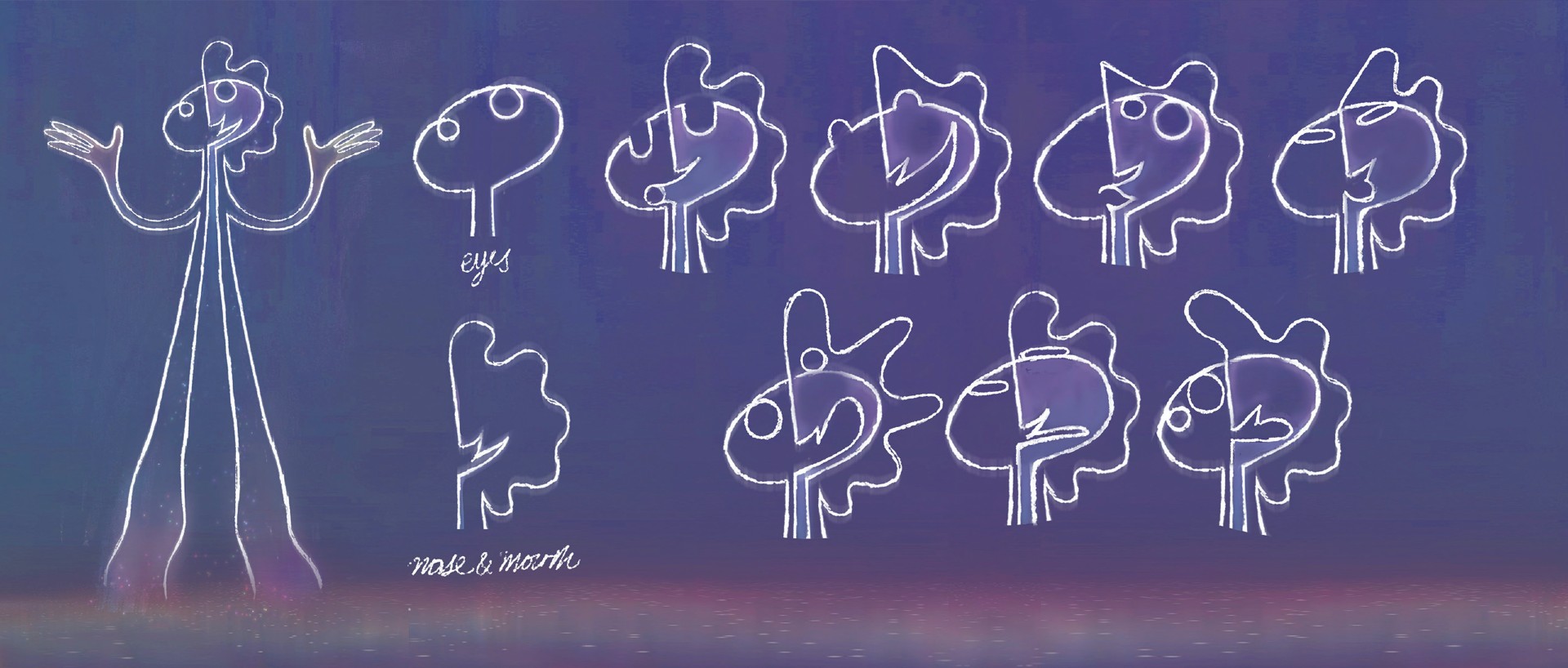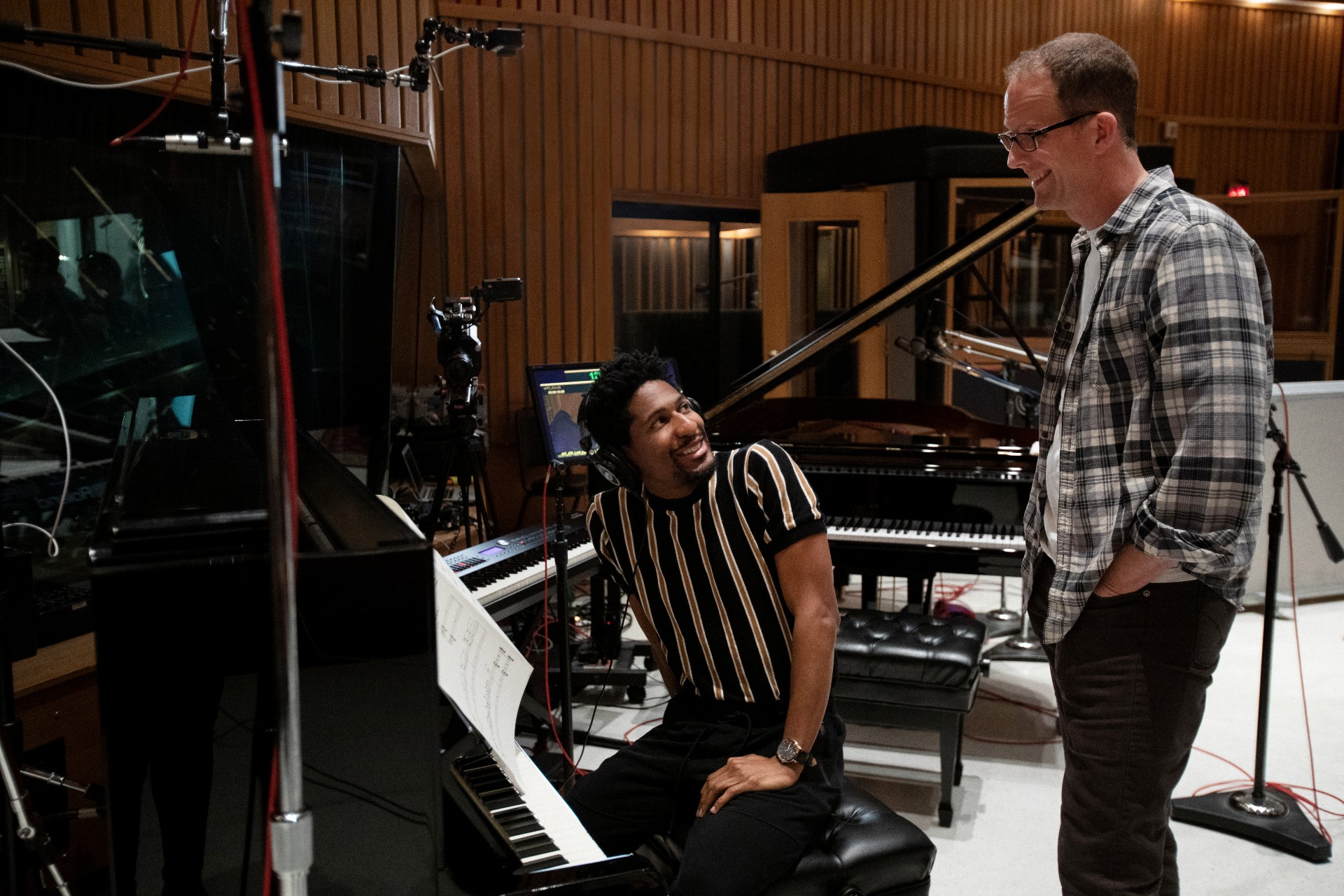Animation studio Pixar has made a name for itself with a series of critically acclaimed blockbusters, earning the Disney-owned company 21 Academy Awards with stand-alone hits and beloved movie franchises that are among the highest-grossing films of all time. The studio’s next big feature, Soul, continues Pixar’s trend of pushing the boundaries of animated cinema with the story of a jazz musician on a journey through the planes of existence before — and after — human life.
Co-directed by two-time Oscar-winner Pete Docter (Up, Inside Out) and Kemp Powers (One Night in Miami), Soul follows high-school music teacher Joe (Jamie Foxx), who finally gets his big break — a chance to perform with one of his jazz idols — only to suffer a terrible accident before he takes the stage. He soon discovers that his best hope of returning to his body now rests on his ability to show a free-spirited, untethered soul that life on Earth is worth living.
Digital Trends spoke to Docter and Powers about their experience using animation to weave music into the heart of Soul and to represent abstract concepts like the human soul and the afterlife.

Digital Trends: Pixar’s movies often seem — or are — inspired by particular events or memories or people in the creative team’s lives. What inspired this particular story?
Pete Docter: One thing was my experience on Inside Out and recognizing that I poured my life into that thing and it didn’t, well … I’m very proud of it, don’t get me wrong, but it didn’t fix everything in the world. It wasn’t the end-all, be-all that I wanted it to be. Making movies, surprisingly, is not going to fix world hunger or my own insecurities. So I just started thinking more about what I’m doing with the time I have. Are movies and cartoons really the best use of that?
All of that was coupled with my son getting married. When he was born, he already had a sense of personality. I could tell who he was. A lot of things evolved and changed over time, but there was a sense of him as a person from day one. And I just thought, “Where did that happen? How is that possible?” Those things led to the formation of this film, plus a ton of work.
The animation in Soul feels very unique and very different from what we’ve seen in past Pixar movies. What are some of the ways you approached the look and feel of the film to give it this unique vibe?

Docter: A lot of the research we did pointed to souls being nonphysical and ethereal, like vapor. So we tried to represent that in some way. But we needed to shoot something — something physical and perceptible — so we came up with this whole different approach where the characters are made up of this fog that stays together. And then we thought, as a nonphysical being, you’re not going to be able to taste or touch, but we needed the characters to have hearing and sight, otherwise, we have no movie, so we had to cheat with some things.
We really tried to lean into that idea of what it means not to have a body, though.
Kemp Powers: Also, because there are so many different characters of color in the human world, we had to take a new approach to the lighting in the film as well. Our lighting director of photography Ian Megibben (pictured below with Docter) did an amazing job, and we brought in consultants like [cinematographer] Bradford Young, who does a lot of Ava DuVernay’s films and was nominated for an Academy Award for Arrival. He’s known for his natural, single-source lighting techniques, which give the human world a very unique, different look, even within the Pixar realm.
A lot more detail and energy went into things like the background characters, too, and in representing New York City, a very real place, and its crowded streets. We really wanted to show the diversity of body types and features that we usually don’t show in our background characters. So, all the way down to the details of the background characters, this film looks very, very different.


You come up with some fascinating ways to represent concepts and elements in whatever comes before and after life. There’s a mathematical feel to them at times, and other times it looks entirely random in a really beautiful way. What was the discussion like when you were developing some of those elements?
Docter: It was amazing. Working at a place full of computer scientists, there are all of these different points of view — both spiritual and scientific. And in some strange ways, they kind of meet up at points — particularly when you have them look out at the universe and say, “This should all be quantifiably understandable and represented by math.” That’s where a lot of the geometric representation of those elements comes from. It’s exciting to me because it’s not like anything we’ve done before. You show people some of the frames from this film, and they’re like, “Is that a Pixar film? That doesn’t look anything like a Pixar film!” That’s really cool. I like it.


Music is such a big part of the movie, and unlike a lot of films that involve music and musicians, the character’s movements really match up well with the music being played. How did you achieve that effect?
Docter: Yeah, it bugs the hell out of me when what they’re doing on the screen doesn’t match up with how the instrument is played or what they’re playing. We sent around 30 cameras to the recording session with Jon Batiste and other musicians, so the animators had tons of footage to see any nuance of the finger positioning or anything else. We also captured MIDI data, so as he played, that information was available to trigger the right notes at the right time. So between those two elements, I would credit the incredible skill of the animators and their observational powers. I think they really captured it very, very believably.
Powers: It was funny being the new guy when you when we started that process. When I watched it, I didn’t know it was sacrilege to ask, “Why don’t we just [motion-capture] the performance?” Everyone was like, “How dare you? We don’t mo-cap, we animate!” And I was blown away. We always applaud when we watch a great sequence for the first time, but the first time we saw one of the jazz performance sequences in the film, it was a level of applause like, “Whoa, no way did we just see that!” It blew everyone away to see that animated.


Co-directed by Pete Docter and Kemp Powers, Pixar’s Soul will premiere on streaming service Disney+ on December 25, 2020.



